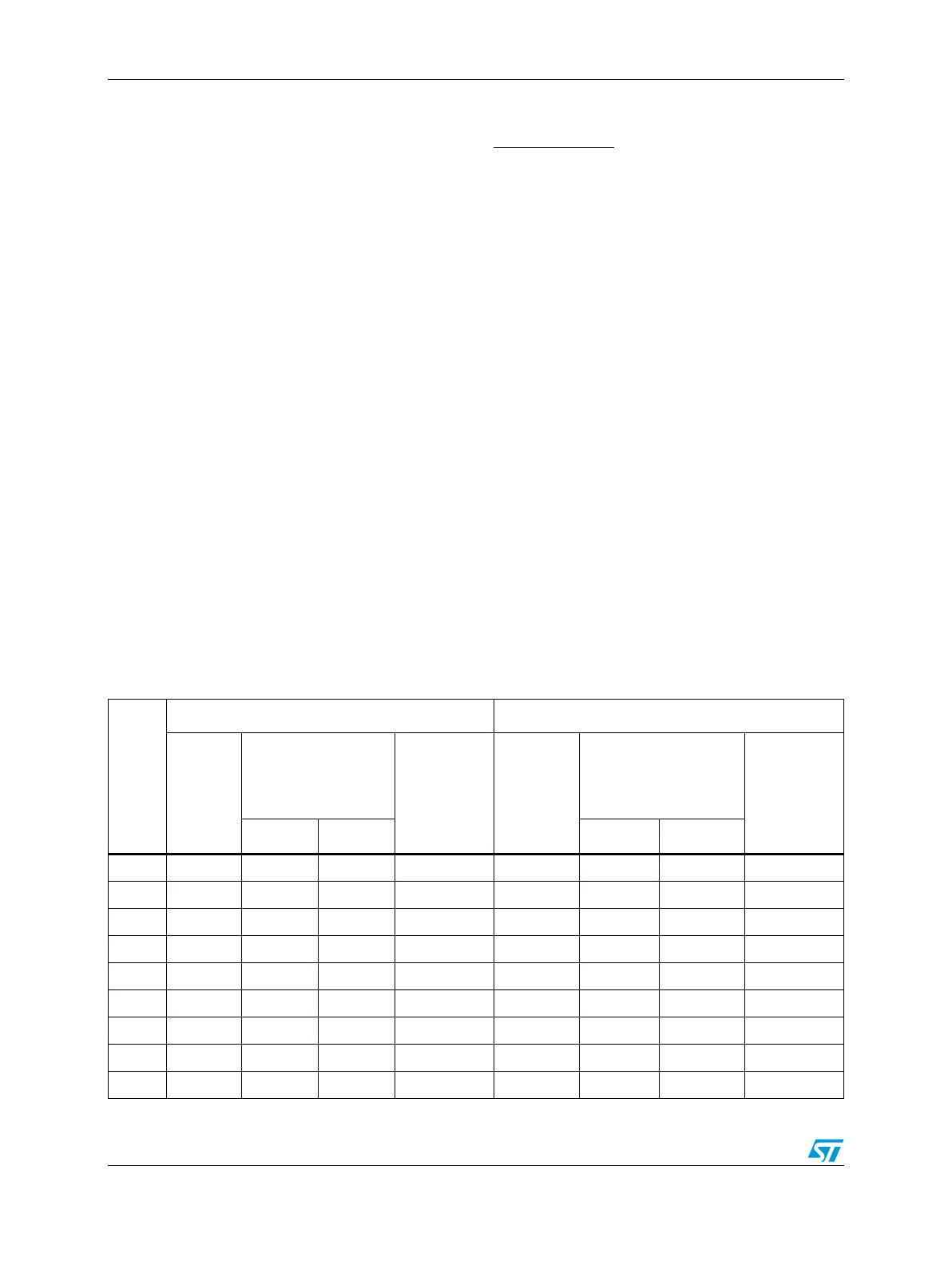LIN Controller (LINFlex) RM0046
488/936 Doc ID 16912 Rev 5
Equation 31
LFDIV is an unsigned fixed point number. The 12-bit mantissa is coded in the LINIBRR and
the fraction is coded in the LINFBRR.
The following examples show how to derive LFDIV from LINIBRR and LINFBRR register
values:
Example 11Deriving LFDIV from LINIBRR and LINFBRR register values
If LINIBRR = 27d and LINFBRR = 12d, then
Mantissa (LFDIV) = 27d
Fraction (LFDIV) = 12/16 = 0.75d
Therefore LFDIV = 27.75d
Example 12Programming LFDIV from LINIBRR and LINFBRR register values
To program LFDIV = 25.62d,
LINFBRR = 16 × 0.62 = 9.92, nearest real number 10d = 0xA
LINIBRR = mantissa (25.620d) = 25d = 0x19
Note: The baud counters are updated with the new value of the baud registers after a write to
LINIBRR. Hence the baud register value must not be changed during a transaction. The
LINFBRR (containing the Fraction bits) must be programmed before the LINIBRR.
Note: LFDIV must be greater than or equal to 1.5d, i.e. LINIBRR = 1 and LINFBRR = 8. Therefore,
the maximum possible baudrate is fperiph_set_1_clk / 24.
Tx/ Rx baud =
f
periph_set_1_clk
(16 × LFDIV)
Table 232. Error calculation for programmed baud rates
Baud
rate
f
periph_set_1_clk
= 64 MHz f
periph_set_1_clk
= 16 MHz
Actual
Value programmed
in
the baud rate
register
% Error =
(Calculated –
Desired)
baud rate
/ Desired
baud rate
Actual
Value programmed in
the baud rate register
% Error =
(Calculated –
Desired)
baud rate
/ Desired
baud rate
LINIBRR LINFBRR LINIBRR LINFBRR
2400 2399.97 1666 11 –0.001 2399.88 416 11 –0.005
9600 9599.52 416 11 –0.005 9598.08 104 3 –0.02
10417 10416.7 384 0 –0.003 10416.7 96 0 –0.003
19200 19201.9 208 5 0.01 19207.7 52 1 0.04
57600 57605.8 69 7 0.01 57554 17 6 –0.08
115200 115108 34 12 –0.08 115108 8 11 –0.08
230400 230216 17 6 –0.08 231884 4 5 0.644
460800 460432 8 11 –0.08 457143 2 3 –0.794
921600 927536 4 5 0.644 941176 1 1 2.124
